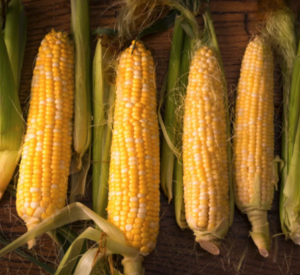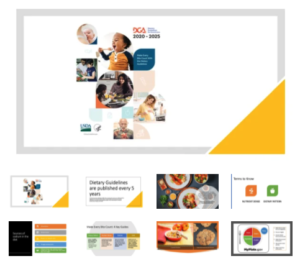Eating in Color: Yellow, Part Two
Eating in Color is back, and this time we've got a fantastic yellow vegetable in mind: corn!As we mentioned on Wednesday, yellow fruits and vegetables are excellent sources of vitamins, minerals, antioxidants, and more! Today we're focusing on corn as our yellow vegetable because I think some of what you will see about it may surprise you.Corn is a starchy vegetable that is rich in fiber (almost 5 grams per serving!). One cup of corn kernels also has 5 grams of protein, 24% of your daily value (DV) for thiamin (aka vitamin B1), 19% DV folate (B9), 17% DV vitamin C, and 11% DV magnesium.And did you know that "Corn is particularly high in lutein and zeaxanthin, two carotenoids that may prevent cataracts and age-related macular degeneration (AMD"? So let's say you want to start cooking with corn -- where can you start? My favorite thing to do with corn is eat it fresh off the cob. This is usually best in summer, when corn is most available. Look for ears with firm outer husks, and full, whole corn kernels. The kernels should not be shriveled or marked by the passage of worms or other bugs. Store corn in its husk in the refrigerator and use as soon as possible. You can also cut the kernels off the cob and store them in a sealed bag in the freezer.If you can't find fresh corn, look for canned corn (but skip sodium-rich options) or try frozen corn. Both of these are available year-round. If you're storing cans of corn, they do best in a dark, cool, dry space like a pantry or cellar. Frozen corn kernels go in the freezer.Corn as a grain: You can pop dried corn kernels into popcorn or cook with cornmeal, but at that point the corn is considered a grain, not a vegetable. In this post, we're sticking to fresh/frozen/canned corn!
So let's say you want to start cooking with corn -- where can you start? My favorite thing to do with corn is eat it fresh off the cob. This is usually best in summer, when corn is most available. Look for ears with firm outer husks, and full, whole corn kernels. The kernels should not be shriveled or marked by the passage of worms or other bugs. Store corn in its husk in the refrigerator and use as soon as possible. You can also cut the kernels off the cob and store them in a sealed bag in the freezer.If you can't find fresh corn, look for canned corn (but skip sodium-rich options) or try frozen corn. Both of these are available year-round. If you're storing cans of corn, they do best in a dark, cool, dry space like a pantry or cellar. Frozen corn kernels go in the freezer.Corn as a grain: You can pop dried corn kernels into popcorn or cook with cornmeal, but at that point the corn is considered a grain, not a vegetable. In this post, we're sticking to fresh/frozen/canned corn! It's fun to cook with corn, and boy do we have a lot of corn recipes in our recipe archive! Check out these great options...
It's fun to cook with corn, and boy do we have a lot of corn recipes in our recipe archive! Check out these great options...
- 10-Minute Corn Chowder
- Oven-Roasted Corn on the Cob
- Corn and Bean Salsa
- Fresh Corn Salad
- Summer Corn Dinner
As always, there are lots of other yellow vegetables, so if corn doesn't interest your clients, perhaps try...
- Summer Squash
- Yellow Beans
- Yellow Bell Peppers
- Yellow Onions
- Yellow Potatoes (like Yukon Golds)
And, if you're keeping track at home, so far we have highlighted...
The Eating in Color fun continues next week with some great green fruits and vegetables! But if you just can't wait, take a look at what we've got for you in the Nutrition Education Store!


